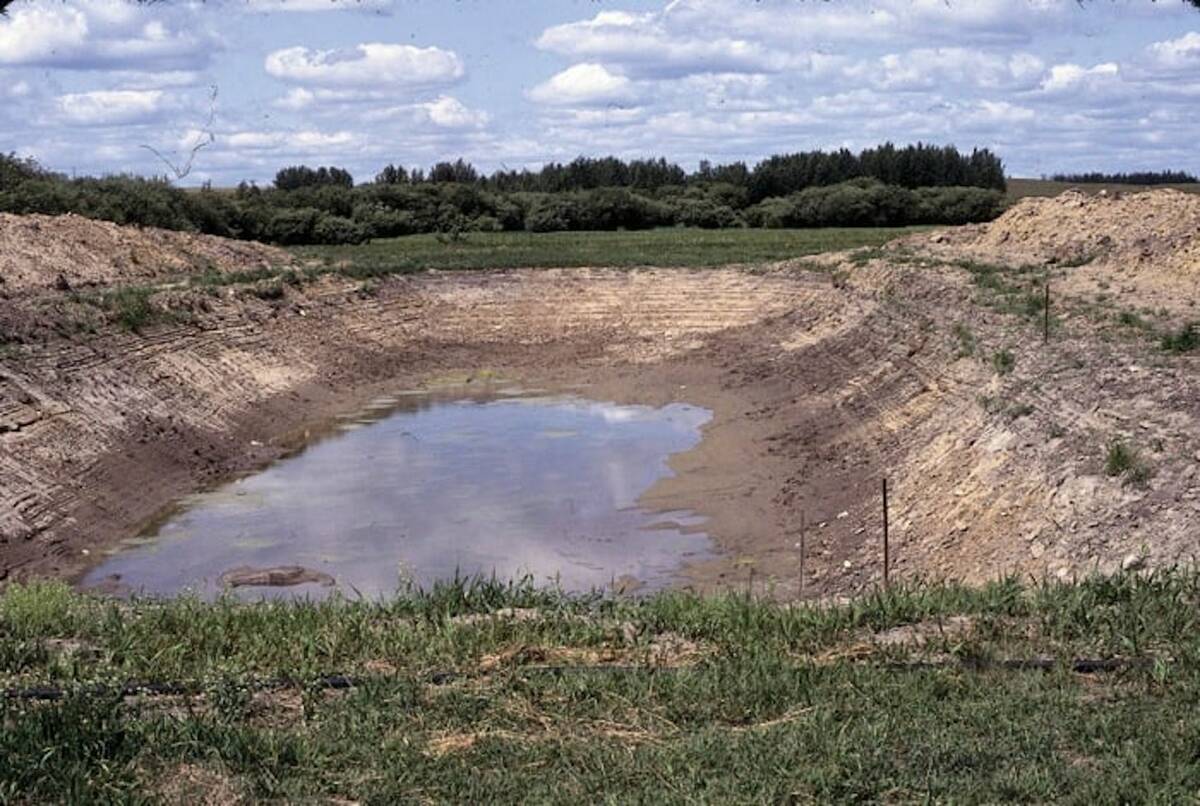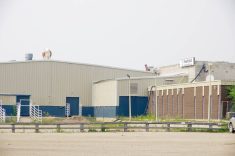Steers and heifers firm
Fed steer and heifer prices were firm to 50 cents per hundredweight higher last week on average.
Calves are predominant in the mix now. Volumes are rising.
American interest was a key factor in the strong market, with a good percentage of calves heading to Washington or Utah.
The higher American cash market and weak Canadian dollar are keeping the export floor price strong, Canfax said.
Alberta prices on April 5 were steers $114.25-$117.50 per cwt., flat rail $195-$195.35 and heifers $113-$117.50 with no test on the rail.
Read Also

Dry summer conditions can lead to poor water quality for livestock
Drought conditions in the Prairies has led to an decrease in water quality, and producers are being advised to closely monitor water quality for their animals.
Canfax said prices could rise despite the higher volumes if packer interest is there, particularly from the United States.
The northwestern U.S. is expected to increase buying in May.
The holiday-shortened week could cause a slight backup that could lower prices next week.
Wholesale beef steady
Slow beef movement and kill lines are the name of the game these days in Canada.
Year-to-date slaughter in Alberta is down three percent. It is down five percent Canada-wide.
Wholesale beef prices are steady, with Montreal at $193-$194 per cwt. and Calgary’s handyweights at $190-$200 and heavies up $2-$3 to $187-$190.
Stronger hide prices, due to the British foot-and-mouth cull, have strengthened byproduct prices.
Cow prices may drop
There is usually a correlation between slaughter cow prices and boneless beef prices.
Boneless beef prices were high in late February and early March, near $2 per pound. Since then, prices have dropped almost 40 cents per lb.
This could be a limiting factor for cash cow prices over the next few weeks, Canfax said.
But tightening supplies should lead to higher prices this summer.
Feeder prices stable
Snowstorms cancelled some auctions but improved pasture prospects.
Average prices were steady.
Canfax said a slide in volumes is typical in April because many new calves are hitting the ground.
Usually the drop in feeder volumes spells a price rally, but the reluctance that has been around for months on heavier weights may continue and keep prices steady, Canfax said.
In stock cow trade, prices were steady. Bred cows sold at $800-$1,600 (most $1200-$1,500).
Bred heifers were $800-$1,600 (most $1,200-$1,500). Cow-calf pairs $1,050-$1,660 (most $1,200-$1,500).
Pork nearing peak
Hog futures traders reacted to the various new foot-and-mouth scares both in Europe and North Carolina last week, all of them false alarms.
Average cash prices rose a little. Packers slaughtered more hogs than a year ago and paid more to get them, Manitoba Agriculture said.
Iowa-southern Minnesota hog prices (at plant mean, 51-52 percent lean, live equivalent) rose from an average of $47.72 (US) per cwt. on April 2 to $48.89 on April 6.
Analysts project that pork prices have reached their near-term peak as restaurants and retailers balk at the high price of bacon.
This might have a dampening effect on cash hog prices.
Japan has sent a second mission to the European Union to assess food safety measures associated with foot- and-mouth disease.
The hog trade is keen to see when Japan’s ban on imports from Denmark will be lifted.
It supplies about one third of Japan’s pork imports.
















